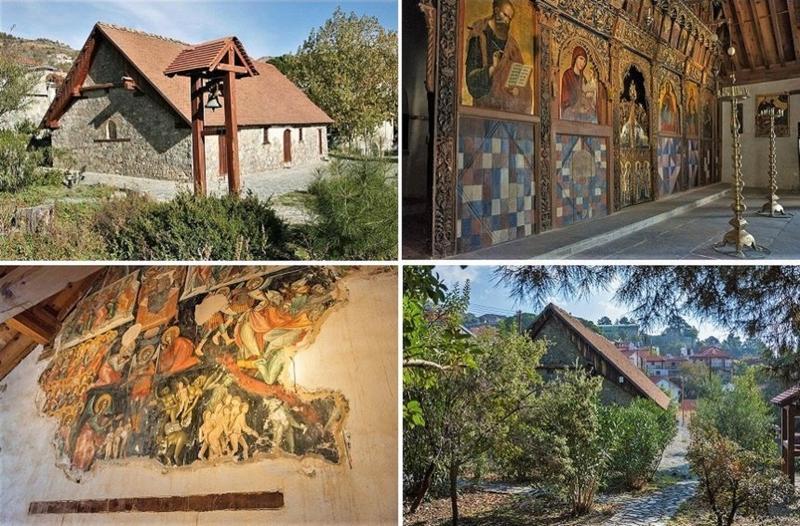
In the village of Pelendri, in an area with a history dating back to medieval times, there is a church that stands to this day, showcasing rare heirlooms from the 12th to the 19th centuries. It is the Church of Virgin Mary the Catholic (or Panagias Katholikis), a temple which is housed within a landscaped garden featuring trees and local herbs.
The Church of Virgin Mary the Catholic, a construction dating back to the 16th century featuring a rectangular shape and wooden roof with hooked tiles on wooden pillars, forms the typical structure for churches found in the Troodos mountains. The walls of the temple are built with natural, local stone, and its most interesting element is the stone decor, particularly the fishbone pattern above the window of the sanctuary.
The size and historical value of the temple led to the Holy Metropolis of Limassol, in collaboration with the Anastasios G. Leventis Foundation, the Department of Antiquities and the local authorities, to turn its interior into a painting treasury. The collection of icons it houses include notable samples of Byzantine art in Cyprus, and almost all the icons featured on the iconostasis, which depict the Virgin Mary with Christ, Saint John the Theologian, and Saint Mamas, are influenced by Italian art of the 16th century.
The composite fresco which covers the entire western part of the temple, depicting the 'Crisis of the Future,' and dating back to the 16th century, with heavy influences from Western art, is particularly riveting.
The iconostasis upon which they are held, which is carved out of wood, is equally impressive.The icon of Mary is particularly interesting, as they eyes seem to follow you wherever you go.
The double-sided liturgical icon, which depicts on one side the Virgin Hodegetria (1697) and on the other the Crucifixion (13th century), has been retrieved from the destroyed monastery dedicated to Saint Mamas Kouremenos in Pano Amiantos.